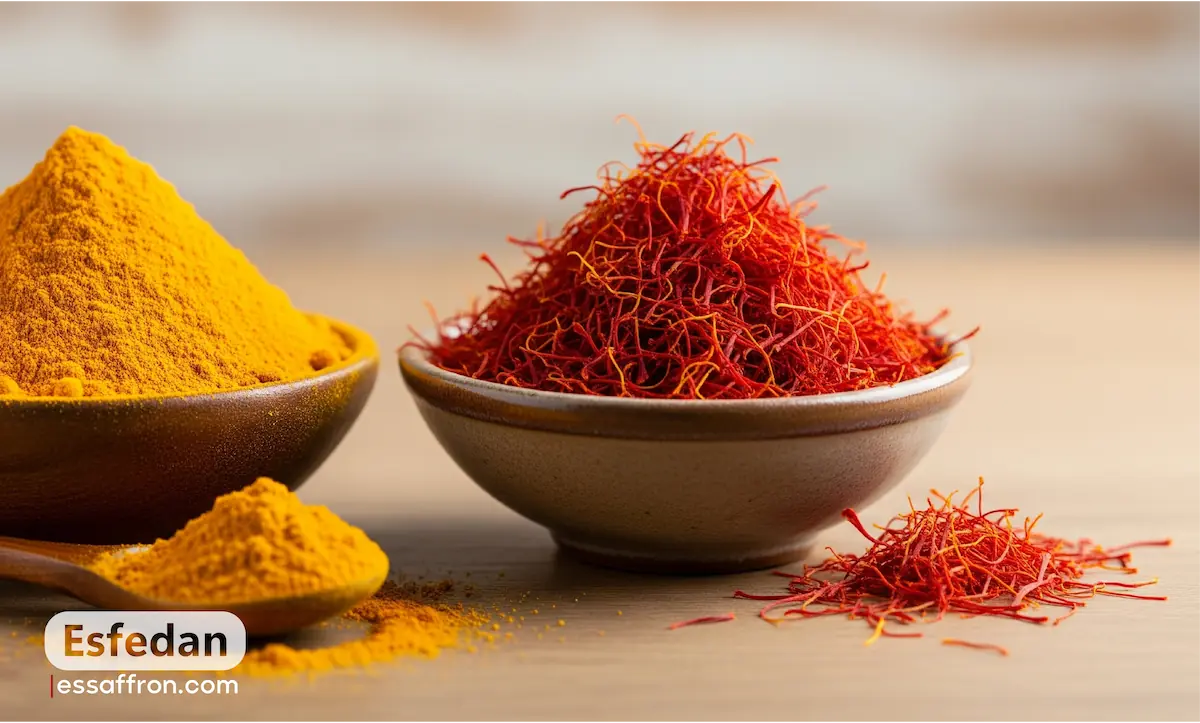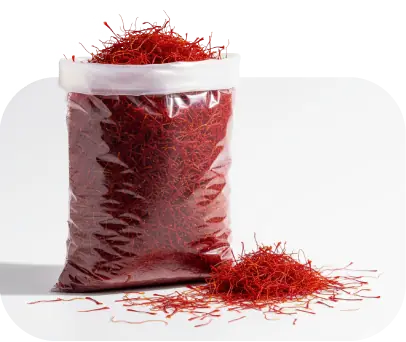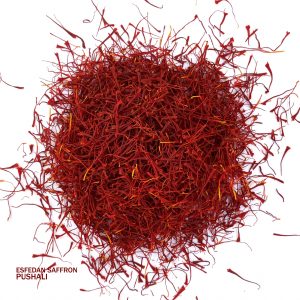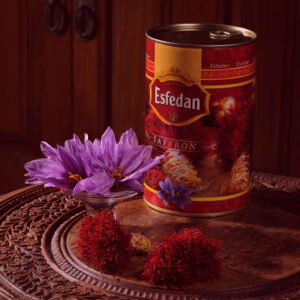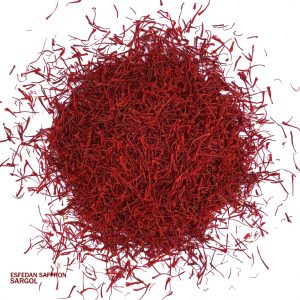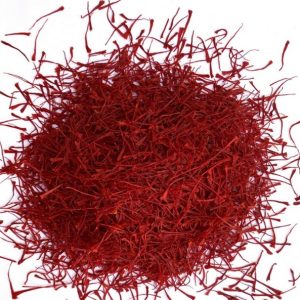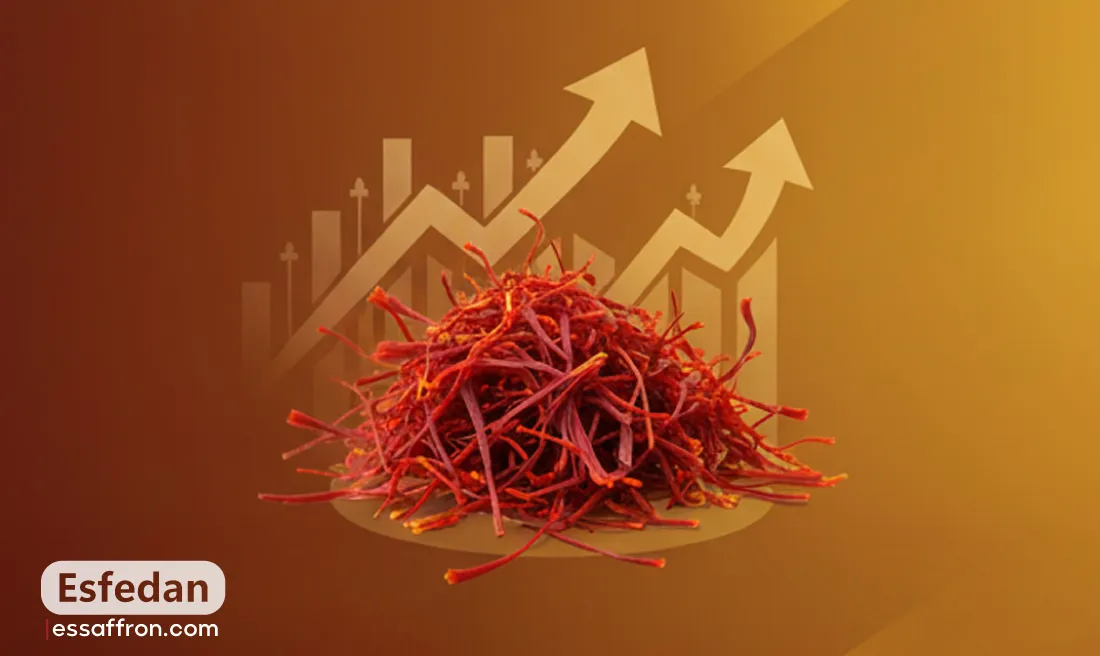You’re looking at a recipe that calls for a pinch of golden spice, but you pause. Which one should it be? Saffron and turmeric both deliver vibrant color, but choosing the wrong one can be a costly mistake that completely changes your dish. They can appear similar in powder form and are often mentioned together, which raises a significant question: Are they just different names for the same thing?
Let’s be clear: saffron and turmeric are two fundamentally different spices. Knowing this is the first step, but understanding the scale of that difference is everything. One is an affordable, earthy root that’s a staple in kitchens worldwide. The other is a delicate, floral treasure known as the world’s most expensive spice.
In this definitive guide, we’ll break down all the key differences from taste and health benefits to price and culinary uses so you can cook with confidence and never have to guess again.
What Are Saffron and Turmeric
To truly understand what makes them unique, let’s examine each one individually. First up is the spice you’re probably more familiar with: turmeric.
Learn more about turmeric
Let’s start with turmeric. Imagine a plant from the same family as ginger—this is where turmeric comes from. It’s not the flower or the leaf we use, but the root of the plant. Originally from South India and Indonesia, India is still the world’s largest producer of this spice. After the root is harvested, it’s boiled, dried, and ground into the fine, vibrant yellow powder you see in almost every grocery store. For thousands of years, turmeric has been a star player in both cooking (it’s the main spice in most curries) and natural medicine, where it’s famous for its anti-inflammatory properties.
Learn more about saffron
Now for saffron, famously known as the world’s most expensive spice. Saffron doesn’t come from a root; it’s the three delicate, deep-red threads (stigmas) harvested from the center of the Crocus sativus flower. Each thread is a powerhouse of flavor and color. They hold a complex taste that is subtly sweet, floral, and earthy all at once. This is also where saffron gets its ability to dye food a brilliant golden-yellow.
Read more: What is Saffron?
The reason for its high price is the intense, manual labor required for harvesting. It takes over 75,000 flowers to produce just one pound of saffron, and every single thread must be picked by hand. While saffron’s story began in ancient Greece, its cultivation has spread globally. Today, the list of famous saffron producing countries includes Iran, known for producing the world’s highest-quality saffron, as well as Spain, India (specifically Kashmir), and Morocco.
No matter where it’s from, the rule for saffron is always the same: a little goes a long way. You only need a few precious threads to completely transform a dish, lending it a rich flavor and beautiful color.

Difference between saffron and turmeric
To settle the debate once and for all, we’ve designed this detailed comparison table. Here is everything you need to know at a glance:
| Attribute | Saffron | Turmeric |
| Quick Summary | A luxury spice for unique flavor and aroma. | An everyday spice for color and base flavor. |
| Taste | Delicate, slightly sweet, with floral and honey notes, and a slightly bitter finish. | Earthy, pungent, peppery, and slightly bitter. |
| Color | Crimson threads that give food a brilliant golden-yellow color. | Yellow-orange powder that gives food a deep, matte yellow color. |
| Price | Very expensive (the world’s most expensive spice). | Very inexpensive and budget-friendly. |
| Best For | Delicate rice dishes (Paella, Risotto), seafood, desserts, and tea. | Curries, stews, soups, meat marinades, golden milk, and as a general coloring agent. |
| Plant Part | The dried stigma (thread) of the Crocus flower. | The dried and ground root (rhizome) of the plant. |
| Main Active Compound | Crocin (coloring agent) & Safranal (aroma agent). | Curcumin (coloring agent and primary active compound). |
| Quantity Used | A tiny amount (a few threads per dish). | Relatively large amounts (often by the teaspoon). |
| How to Use | Best bloomed in warm liquid (water, milk) to release flavor and color. | Mixed directly into dishes or bloomed in hot oil. |
| Calories (Approx.) | Very low (~3 calories per gram). | Low (~9 calories per gram). |
| Key Micronutrients | Manganese, Vitamin C, Potassium, Iron, and the antioxidant Crocin. | Manganese, Iron, Potassium, and the antioxidant Curcumin. |
| Glycemic Index | Very low (near 0), has a negligible effect on blood sugar. | Very low (near 0), has a negligible effect on blood sugar. |
| Acidity (pH) | Slightly acidic (~pH 6), has no significant impact on a dish’s acidity. | Slightly acidic (~pH 6-6.5), has no significant impact on a dish’s acidity. |
The Difference in Use of Turmeric vs Saffron
The essential difference between using turmeric and saffron in the kitchen comes down to flavor, color, and quantity. Saffron imparts a delicate, floral, and subtly sweet flavor, making it a luxury finishing spice for refined dishes like paella, risotto, and seafood. In contrast, turmeric offers a strong, earthy, and peppery taste that serves as a foundational element in robust dishes like curries and stews. This leads to the most important rule for any cook: you should never substitute saffron with turmeric if you want to preserve the original flavor. While turmeric can mimic saffron’s golden color, though in a much deeper, more opaque way, it will completely overpower the delicate aroma that saffron is prized for. This is also reflected in the amount used: you only need a few threads of saffron, whereas turmeric is often measured by the teaspoon.
Different types of Turmeric vs Saffron
There are approximately 30 varieties of turmeric that can be grown. Due to its greater quality and wider distribution, “erode” is the most popular. Krishna is another variety that produces the best yield per plant. You can also find these types:
- China scent
- Red streaked
- Alleppey
- Thodupuzha
- Andhra Pradesh
- Salem turmeric
It is often difficult, or impossible, to identify the type of turmeric that you have purchased. Most varieties are the same in taste and consistency. To ensure quality and purity, it is always best to choose a natural, organic brand. Many famous types are named after where they are grown, with each region producing a unique profile.
When it comes to saffron, the conversation about different ‘types’ quickly turns into a quest for quality. While you might hear of protected varieties like Sardinian saffron from Italy or the highly-prized Kashmiri saffron from India, the journey to finding the best saffron in the world is less about geography and more about understanding its rigorous grading system. This system, which is based on how much of the red thread (stigma) is kept versus the yellow part (style), is especially important for the world-renowned saffron from Iran. This system gives us the different types of Iranian saffron, such as:
- Super Negin
- Sargol
- Pushal
- Dasteh (Bunch)
For the average home cook, telling these grades apart can be tricky. The best approach is to buy from reputable suppliers who specify the grade to ensure you’re getting the pure, high-quality spice you’re paying for.
Read more: The Consumer Guide to Purchasing Saffron

Why Is Turmeric So Affordable and Saffron a Luxury
The most dramatic difference between these two spices is the price. Turmeric is incredibly budget-friendly, while saffron holds the title of the world’s most expensive spice. This massive price gap is due to the harvesting method. Turmeric is an efficiently harvested root, but saffron requires tens of thousands of flowers to be picked by hand to produce a single pound. This intense labor is why, when you buy saffron, it’s sold by the gram. For businesses needing larger quantities, Saffron Bulk is available, but it remains a significant investment compared to the affordability of turmeric.
Nutritional Value: Saffron vs Turmeric
Before we dive into the details, let’s start with the most important fact: since we only use a tiny amount of these spices in any dish, their contribution to your daily vitamin and mineral intake is minimal. The real nutritional story isn’t about the basic nutrients, but about their unique and powerful active compounds. However, for a head-to-head comparison, here’s a quick breakdown.
| Nutrient | Saffron | Turmeric |
| Vitamin C | 80.8 mg | 0.7 mg |
| Vitamin B6 | 1.01 mg | 0.107 mg |
| Sodium | 148 mg | 27 mg |
| Folate | 93 µg | 20 µg |
| Polyunsaturated fat | 2.067 g | 0.756 g |
| Manganese | 28.408 mg | 19.8 mg |
| Magnesium | 264 mg | 208 mg |
| Phosphorus | 252 mg | 299 mg |
| Potassium | 1724 mg | 2080 mg |
| Calcium | 111 mg | 168 mg |
points based on the infographic:
The main source of information is the USDA database.
All values are specified per 100 grams of the product.
This table displays only the significant differences as shown in the infographic.
Glycemic Index and Blood Sugar Impact
For anyone concerned about blood sugar, here’s the good news: both saffron and turmeric have a negligible effect on it. Turmeric has a Glycemic Index (GI) of 0. While some online sources incorrectly list saffron with a high GI, its actual impact is also considered to be near zero, just like other spices, due to its very low carbohydrate content. What’s more important for spices is the concept of Glycemic Load (GL), which accounts for the tiny serving size. Because you only use a pinch of saffron or a small amount of turmeric, the amount of carbs you consume is almost nothing. Therefore, the Glycemic Load for both is extremely low, meaning they will not cause a spike in your blood sugar levels.

Health Benefits: Saffron vs. Turmeric
Many people ask, “is saffron and turmeric the same thing?” and while we know they differ in the kitchen, what is the difference between turmeric and saffron when it comes to health? Both spices have been used in traditional medicine for centuries, but they offer their benefits through unique compounds. Let’s explore the distinct health benefits of saffron and see how they compare to the well-known properties of turmeric.
For fighting inflammation, both spices are effective. Turmeric contains curcumin, a powerful and widely studied anti-inflammatory compound. Saffron also fights inflammation, but it does so through its own unique antioxidants like crocin and kaempferol. While turmeric is more famous for this specific benefit, saffron provides a potent alternative.
When it comes to weight management, saffron appears to have a more direct effect. Several studies suggest that saffron extract can help reduce appetite and body mass index (BMI). Turmeric’s role is less direct, though its anti-inflammatory properties can support a healthy metabolism.
In cancer research, both spices show significant promise in lab studies. Saffron is rich in antioxidants like crocin that fight cellular damage from free radicals. Similarly, turmeric’s curcumin has been shown in lab settings to slow the growth of cancerous cells, highlighting the potential of both spices in this area.
For cardiovascular health, each spice contributes differently. Saffron may help lower blood pressure and improve cholesterol profiles. Turmeric is noted for improving the health of blood vessel linings and reducing inflammation, which are key factors in heart disease.
One last thought about saffron vs turmeric
In this article, we discussed the difference between saffron and turmeric. The cooking application and affordability factors may play a role in deciding between turmeric and saffron. Although turmeric is the more affordable of the two, it can also be more difficult to use in the kitchen. Saffron, on the other hand, can be used for a variety of purposes due to its sweet and savory flavors.
While turmeric has been extensively researched for its potential health benefits, saffron has also been shown to have antioxidants that can make a difference. Both are great to have in your kitchen, ready for inspiration whenever it strikes.
Frequently Asked Questions: saffron vs turmeric
What is the main difference between turmeric and saffron in cooking?
The main difference is flavor and color. Saffron has a delicate, floral, and slightly sweet taste, giving food a brilliant golden-yellow hue. Turmeric has a strong, earthy, and peppery flavor, providing a deep, matte yellow color. You should never substitute them for flavor.
Are saffron and turmeric the same thing?
No, they are two completely different spices. Saffron comes from the tiny red stigmas (threads) of the Crocus sativus flower, while turmeric is the ground root of the Curcuma longa plant. They have different tastes, prices, and uses in the kitchen.
Can I use turmeric instead of saffron?
You can use turmeric to give your food a yellow color, but it will not replicate saffron’s unique flavor and will make your dish taste completely different. For dishes where saffron is the star, like paella or risotto, substituting is not recommended.
Why is saffron so much more expensive than turmeric?
The price difference is due to the harvesting process. A large number of flowers (around 75,000) are needed to produce just one pound of saffron, and every thread must be picked by hand. Turmeric root can be harvested much more easily and in larger quantities, making it very affordable.


